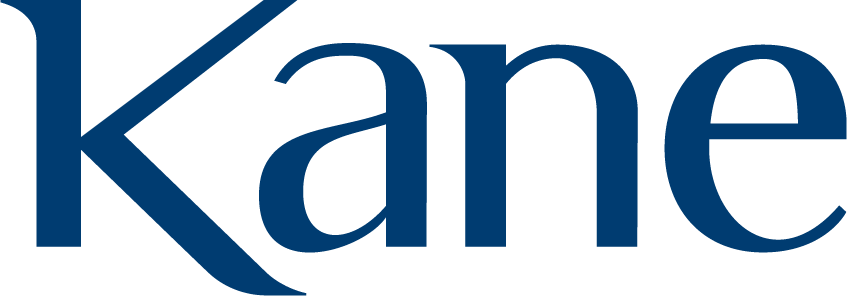Communicating with the Correct Medium for Each Audience
In advertising and marketing, choosing the correct medium through which your message is delivered is critical to making sure your campaign or communication plan is successful. There is a lot of noise directed at businesses and consumers, and it is our job to ensure our message is streamlined to meet the audience where they are. Getting your message to the right audience is key, and it is important to understand the different channels and platforms and the best way to use each of them.
There are three primary factors that need to be considered when choosing the medium that makes the most sense for your company:
Define your target audience
Who are the people you want your message to reach? Understanding this plays a crucial role in determining the medium you use. Numerous factors must be considered when pinpointing a key audience, including but not limited to age, location, occupation, marital status, etc. Factors like age matters when analyzing your target audience, as people of different ages have different preferences for the best media type. For example, if I wanted to market a product to millennials, I would want to advertise more on social media channels or through digital media rather than through print advertising such as newspapers or magazines. Typically, younger generations are more active on social and digital media and use that as their primary news source, while others may turn to more traditional news outlets.
Establish a clear budget
Understanding your budget when developing strategies can ensure you get long-lasting and continuous results from your campaign. Realize that just because your marketing budget may be small, your placements don’t have to be. Instead of spending all of your budget on one large ad, such as a single TV spot, aim for continuous placements in smaller, more targeted publications your audience will see most.
Solidify your message
Each campaign has different goals, expected results and messages that need to be delivered. Understanding the intent of the campaign can help you select the right medium. When you’ve identified your audience and budget, ask yourself, how can I bring them the message they need to hear?
Once you’re ready to choose the medium to deliver your message, it’s important to know the different types of mediums and how they may reach your audience. There are several different types of advertising mediums through which you can relay your message. Some of these mediums include print media, broadcast media and digital media.
Print Media
Print media is one of the oldest media channels for delivering information to the public. Before we entered into the world of technology, people relied on newspapers and magazines to learn everything and stay up to date on the world around them.
One of the pros to advertising through print media, specifically newspapers, is that newspaper ads can be very targeted, as they are often delivered to certain geographic areas. Additionally, older demographics who may be less tech-savvy or receptive to digital advertisements may say that newspapers are their preferred outlet.
While print media is still a valued tool, it is important to keep in mind the declining circulation of print media we have seen in the last several years. In 2000, 59.4 million Sunday newspapers were delivered, compared to an estimated 30.8 million Sunday papers in 2018. Furthermore, only 5% of adults ages 18 to 29 read their print newspaper often. Although the circulation and viewership through newspapers is declining, print media continues to allow for more targeted ads to a loyal readership.
Broadcast Media
One of the most common types of advertising takes place through broadcast media, which includes channels such as television and radio. Broadcast media has a very high reach and can leave a lasting impression on many viewers. Through television, each channel delivers a different type of content, be it for sports, news, entertainment, comedy, cartoons, travel, politics, religion and more. Knowing which channel you would like to advertise on helps you target your specific audience.
All this to say, advertising through broadcast media can require significant monetary costs. It is a large investment to not only purchase a slot but to develop the creative content behind the messaging. Additionally, since television ads generally get good exposure, a bad ad can significantly hurt a company's brand reputation.
Digital Media
Nowadays, people rely heavily on the internet and social media to get their news as they have their smartphones with them at all times. Advertising through digital media is very efficient in targeting specific, granular audience groups and advertising your message accordingly.
Advertising through digital media is not only cost-effective and has an extremely high reach, but it also allows your audience to engage and interact with your message. Seeing people engage in posts through comments, likes and shares allows for easy tracking of the audience’s response and attitude toward it. Analytics also show the click-through rate, which is the ratio of users who click on a specific link to the number of total users who view a page, email, or advertisement. It is commonly used to measure the success of an online advertising campaign for a particular website as well as the effectiveness of email campaigns.
One of the disadvantages of using digital media is that due to spam accounts and fake promotional articles, this medium can be considered an untrustworthy option. Being active on social media takes intentional planning, research and consistency. It is important to remain relevant and up-to-date, as an inactive profile can create mistrust among potential customers.
The Bottom Line: Choosing the right medium for your advertisements and messages has the advantage of not only communicating your message effectively but also in a personalized way that appeals to your targeted audience. If you’re curious about which mediums are best for your company to advertise your message or need assistance reaching your target audience, contact Kane Communications Group, we’re happy to help.
